What Is Microneedling and its Benefits, Post-Treatment Care, & More
https://flawlessaesthetics.com.au/pages/microneedling
Microneedling has become a widely used cosmetic procedure for those seeking to improve their skin’s appearance. It involves using fine needles to create microchannels in the skin, which can help support natural rejuvenation processes.
Although it may sound intimidating due to the use of needles, microneedling is considered a minimally invasive cosmetic procedure when performed by trained professionals.
This article provides an overview of what microneedling is, its potential cosmetic benefits, and general considerations for aftercare.
What Is Microneedling?
Microneedling, sometimes referred to as collagen induction therapy, is a cosmetic procedure that involves the use of fine, sterile needles to create controlled microchannels on the skin’s surface. This process encourages the skin’s natural renewal mechanisms, which can help improve overall texture and appearance over time.
As we age, the skin naturally loses collagen and elastin—proteins that contribute to its firmness and elasticity. Microneedling may help support these natural processes, promoting smoother and more refined-looking skin. Results vary depending on factors such as skin type, aftercare, and the number of sessions received.
You can choose from several microneedling approaches, each designed to address different cosmetic goals. Your practitioner can recommend the most suitable option based on your skin type and preferences.
Traditional Microneedling:
This method involves using a microneedling device to create controlled microchannels in the skin, which may help support natural collagen processes and improve overall texture.
Microneedling with PRP (Platelet-Rich Plasma):
Sometimes referred to as a PRP-enhanced treatment, this approach involves applying platelet-rich plasma—prepared from your own blood—during microneedling. It is intended to support skin revitalisation and recovery, but outcomes can vary among individuals.
RF Microneedling (Radiofrequency):
This technique combines microneedling with radiofrequency energy to gently heat deeper skin layers, which may help enhance firmness and tone over time.
Advantages of Microneedling
Microneedling is a cosmetic procedure that may help improve the overall appearance and quality of the skin. Results can vary depending on individual skin type, lifestyle, and aftercare.
- Supports skin tone and texture: The procedure may help promote a smoother and more even-looking complexion.
- Encourages natural collagen and elastin production: Microneedling can stimulate the skin’s natural renewal processes, which may enhance firmness over time.
- Improves the appearance of scars and uneven pigmentation: It may help reduce the visible appearance of mild scarring or dark spots.
- Minimises visible fine lines and wrinkles: The treatment can help refine the skin’s surface for a smoother look.
- May support hair and scalp care: Some variations of microneedling are used to help improve scalp condition and support hair health.
- Suitable for various skin types: Microneedling can be adjusted to accommodate different skin tones and sensitivities.
- Non-laser cosmetic option: This procedure offers an alternative for individuals who prefer non-laser treatments.
- Accessible for many patients: Microneedling is often considered an affordable cosmetic option compared to some other aesthetic procedures.
What Areas Can Microneedling Be Used On?
Microneedling is a cosmetic procedure that can be performed on various parts of the body to help support overall skin appearance. The treatment area depends on individual goals and practitioner assessment.
Common areas include:
-
Face: Often chosen to help refine texture and promote an even-looking complexion.
-
Stomach: May be used to help improve the look and feel of the skin’s surface.
-
Thighs: Can assist in supporting smoother-looking skin in this area.
-
Arms: Sometimes used to help enhance skin tone and texture.
- Backs of hands: May support skin suppleness and overall appearance.
What Are the Steps Involved in Microneedling?
Microneedling is a minimally invasive cosmetic procedure performed under professional supervision. While it involves the use of fine needles, it is generally well-tolerated when carried out by a qualified practitioner.
Initial consultation:
Before the procedure, your practitioner will assess your skin, review your medical history, and discuss your aesthetic goals to determine suitability.
Numbing:
A topical numbing cream may be applied to help minimise discomfort and ensure comfort during the session.
Microneedling procedure:
The practitioner uses a handheld device with fine needles that create controlled microchannels in the skin’s surface. This process is designed to support natural skin renewal and improve overall texture.
During the procedure, the practitioner gently moves the microneedling device across the skin in a controlled pattern to create precise microchannels. The needle length may vary depending on the individual’s skin type and the area being treated, typically ranging from 0.5 mm to 2 mm.
Microneedling may also be combined with other aesthetic treatments to complement your skincare routine. For example, dermaplaning is sometimes performed beforehand to help remove surface debris and prepare the skin for treatment.
The Comparison Between Professional Microneedling and At-Home Microneedling
If you choose at-home microneedling, devices such as dermal rollers or microneedling pens can be used for gentle, surface-level treatment.
At-home tools generally do not penetrate as deeply as medical-grade devices used by trained practitioners in clinical settings. Professional microneedling may allow for deeper and more controlled treatment, which some individuals find more effective for their goals.
There are potential risks associated with at-home microneedling, including skin irritation, minor injury, or infection if devices are not used correctly or hygiene practices are insufficient. Following safety guidelines and consulting a qualified practitioner can help minimise these risks.
Am I a Suitable Candidate for Microneedling?
Microneedling is generally safe for many individuals, but it may not be suitable for everyone. People in the following situations should consult a qualified practitioner before considering treatment:
-
Pregnant or breastfeeding women (precautionary)
-
Individuals taking blood-thinning medications
-
Patients with active skin conditions, such as acne, rosacea, or eczema, in the treatment area
-
People currently under medical supervision for specific health conditions
A consultation with a licensed practitioner is essential to assess suitability, discuss potential risks, and determine whether microneedling aligns with your goals.
Microneedling may help improve the appearance of skin issues such as fine lines, scarring, uneven pigmentation, texture irregularities, and mild skin laxity.
If you are considering this treatment, schedule a consultation with a qualified practitioner. During this session, you can discuss your goals, and your practitioner can provide advice on suitable approaches and what to realistically expect from the procedure.
Microneedling During Pregnancy or Breastfeeding
Microneedling involves creating small punctures in the skin, which carries a potential risk of infection or other complications. Because of this, it is generally not recommended during pregnancy or breastfeeding.
You can discuss your suitability with a qualified practitioner and plan treatments once you are no longer pregnant or breastfeeding.
Microneedling Recovery
Following a microneedling treatment, it’s important to follow your practitioner’s aftercare instructions to support your skin’s recovery. For the first 72 hours, the treated area may feel and look similar to a mild sunburn. After this period, some dryness, peeling, or flaking may occur.
Patients are generally advised to:
-
Avoid makeup for one to two days after treatment.
-
Refrain from using active skincare ingredients (such as retinol, AHAs, or BHAs) and exfoliants for approximately seven days.
-
Delay other cosmetic treatments, such as volumising or wrinkle-reduction procedures, for at least two weeks.
-
Use gentle cleansers, moisturisers, and SPF during the initial week of recovery.
Limiting alcohol and caffeine may also help support skin healing. Always consult your practitioner for personalised aftercare guidance based on your individual needs.
How Long Before I See Microneedling Results?
Results from microneedling typically start to become noticeable after about four weeks, though this can vary depending on factors such as:
-
Individual response to the treatment
-
Number of sessions undertaken
-
Severity or extent of the skin concern
Optimal outcomes often require multiple sessions, and results may differ between individuals. Always discuss your expected timeline with your practitioner.
The number of microneedling sessions recommended varies between individuals. Typically, patients undergo three to six sessions per year at intervals of four to six weeks, depending on skin condition and goals.
Combining microneedling with supportive facial treatments and a consistent skincare routine may help maintain results. After completing an initial course, some patients choose one or two follow-up sessions annually for maintenance.
Is Microneedling Permanent?
Microneedling is not a permanent cosmetic treatment. Results are temporary and can vary depending on factors such as genetics, hormonal changes, environmental exposure, skincare habits, and overall health. Regular sessions may be recommended to help maintain the skin’s appearance over time.
Following the recommended session schedule can help support and maintain your skin’s appearance over time, though individual results may vary.
Does Microneedling Hurt?
Microneedling is a minimally invasive cosmetic procedure. A numbing cream is applied to the targeted areas to help reduce discomfort. During the treatment, the microneedling device creates tiny punctures in the skin, which may cause minor bleeding or a scratchy sensation. Some patients notice slight discomfort in bony areas, such as the forehead. The procedure typically lasts 30 to 60 minutes, and discomfort is usually brief. Individual experiences may vary.
Is Microneedling Worth It?
Microneedling is a minimally invasive cosmetic treatment that may help improve skin texture, tone, and the appearance of scars or hyperpigmentation. It can also support collagen and elastin production. Results vary between individuals and are not permanent.
Before undergoing microneedling, it’s important to research the procedure, weigh the potential benefits and limitations, and consult a qualified and experienced aesthetician to determine if it is suitable for your skin and goals.
Flawless Aesthetics provides microneedling treatments in Sydney. To learn more or book a consultation, call 02 8041 3293 between 10:30 a.m. and 7:00 p.m. AEST, Monday to Friday. Our staff will assist you with your enquiries.

